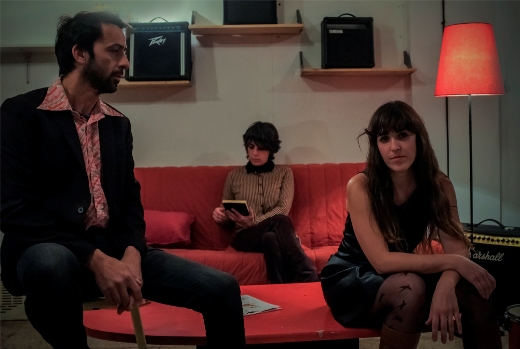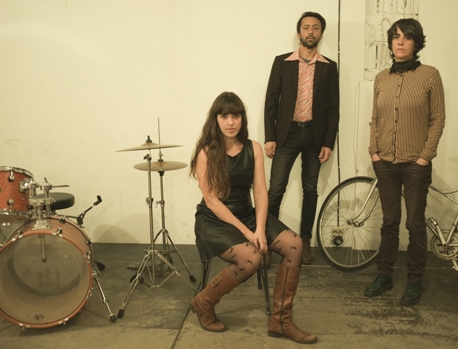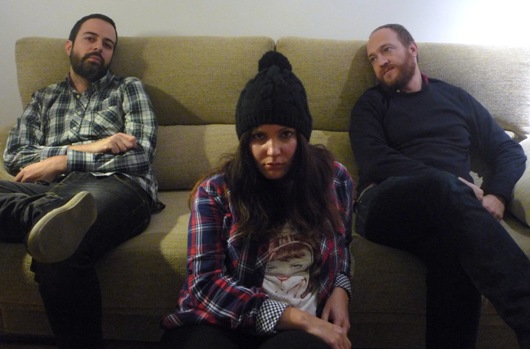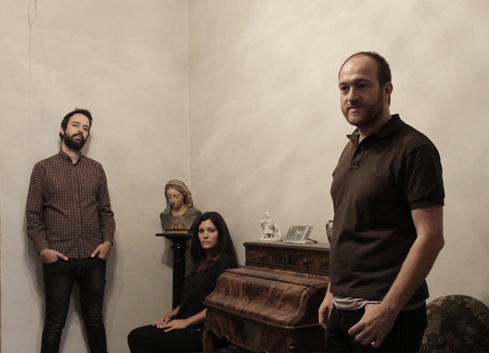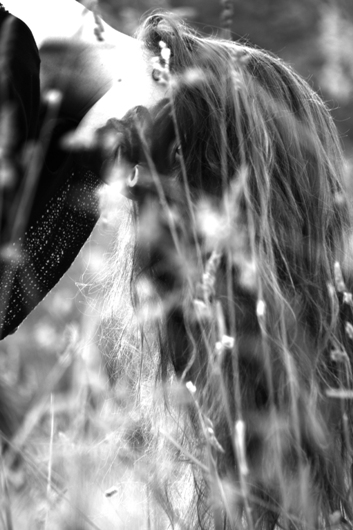Seville-born Miguel Marín is a veteran of high-risk music. His CV includes names like Sr. Chinarro, Piano Magic and Arbol, plus his current project of contemplative electronic music, halfway between sound art and open experimentation. Determined to make a radical change, he is striking out on the path of art rock, full of pitfalls and perils. As a collaborative project, in Montgomery he’s joined by Gaby Vargas (guitar and latest member to join the ranks of Arbol), Miriam Blanch (bass and vocals, known on the nineties indie scene as member and co-founder of Seville band Explosivos Acme and currently director of the Intramuros sound art festival) and Amanda Palma (drums and vocals, also part of projects like Norris B and Katapulto).
We talked to Miguel about this new project, which he’ll be presenting at Emergència!
How did the project come about, and why?
Montgomeryis something I’ve been nurturing for two or three years. I wanted to throw off the melancholy and pressure that sometimes get to me with Arbol, where I decide everything. I wanted to form a band where everyone had a say, and it had to beMontgomery.
After being involved in countless projects, Montgomery is a more expressionistic, perilous territory. What do you want this new project to say?
More than saying something, I really wanted to make music with friends where everyone put in their ideas. We try not to impose limits. We mix acoustic instruments with production and electronic arrangements. It’s everyone’s project.
There’s a contained tension in all of the songs. It’s a kind of cross between Cosey Fanni Tutti and Julian Cope, to mention just two names. Would you agree that tension and atmosphere are the basic features?
Maybe; I’m a big fan of 4AD and Throbbing Gristle. There’s all kinds of influences in the band, we listen to a lot of subliminal jazz. Miriam, our bass player, mixes electronic music and is really into experimental music and field recordings. We all sing and we shake down well together. We like using 303 sound and mixing it with distorted guitar. We try to leave space and create tension, but with warm tones.
Listen to Montgomery here.
Are you an experimental group?
You could say we experiment with mixing styles and sounds. You end up hearing the influences, I guess. We sing in English because I lived in theUK for years, I still visit a lot and you could say it’s my second language. We also do instrumentals.
“Montgomery imbibed the Motown sound, absorbed major black Caribbean influences and, on his constant visits to the grooviest venues in New Orleans, incorporated jazz, before discovering and appropriating afrobeat and Irish folk.” What is this novelistic profile packed with snippets of pop culture? Tell me something about this amalgam of names and ideas.
[Laughter] There’s a dance spectacle by the Teresa Navarrete company, who I’ve worked with for years, where we’ve invented a character calledMontgomery, and that’s me. I perform some ofMontgomery’s music live in the show, but solo, in a barer version. This description comes from the press dossier of the show, which is called “Salón Otto” and came out last December.
How much of this project is you?
I set up the project with ideas I’d been working on at odd moments in hotels, airports, and so on. But always with the idea of forming a band and playing live. What I want is to play with people, and for these people to have the same importance as me in the group; I don’t want people to say this is the new project by Arbol’s Marin, though I suppose it’s inevitable.
Are you fans of Montgomery Clift? Why the name?
We are fans of Montgomery Clift, I always remember my mum watching those films. The name really came from Teresa Navarrete, the dancer/choreographer I work with. One day over dinner at her house, we were brainstorming and she came up with this name.
What are Montgomery like live?
A liveMontgomerygig is drums, bass, guitar, keyboards, percussion and vocals, electronic music with a solid base. Really dynamic and intense with lots of nuances.
I listen to your music and think of the title of a book by Servando Rocha, Nada es verdad, todo está permitido [Nothing is true, everything is allowed]. In music, there are no truths and everything is allowed.
That’s our aim—as far as we’re concerned, everything is allowed. We’ve got some really varied songs; it would bore me to play three songs in a row with verse, chorus and back to verse, four As and then four times C-D. We like loops, repetitions and not much structure. The group is Amanda (drums and vocals), Miriam (bass and vocals), Jesús Guitarra (keyboards and vocals), Gaby—who can’t make it for this concert—(guitar and electronics) and me (vocals and electronics). We’re just starting to play together. I think we’ve got a long road ahead of us and I’m intrigued to see what we come up with.
Will Arbol carry on as always?
Arbol is at full throttle with concerts planned and a new disc in the pipeline. But right now, I’m busy with a film soundtrack, I’ve recently finished a documentary and I’m working with several dance companies. WithMontgomery, we’re in the recording studio to bring out a disc this year, and we’ve got loads of practices.
Montgomerywill be playing on the Foyer stage on 15 February at the sixth and latest Emergència! festival.








